|
|
:: [ A brief History of Andre Citroen and of the 5CV Citroen Model C ]
::
(Written
in 2001)
Part 1/. Brief History of
Bozi Mohacek's 1921 Citroen 5CV " L'Escargot "
Part 2/. Andre Citroen and his introduction to double chevron gears.
Part 3/. Andre Citroen and his connection with Mors and Munitions
Part 4/. Formation of the 'S.A. Andre Citroen' Car Company.
Part 5/. Brief History of the Model C 5CV Citroen
Part 5/. Brief History of the Model C 5CV
Citroen
The next saloon Model to be launched in 1921 was perhaps the most famous
Citroen of the vintage period, this being the Model C. Apparently a
retrograde step in as much as the car was much smaller and less
powerful, having only two seats and tiny engine of 856cc, it was
nevertheless designed with a specific untapped market segment in mind, -
women. The Model C was first shown at the Paris Motor Show in October
1921 and the first production models came off the line at the leased,
and later purchased, Clement Bayard factory in Paris Levallois in May
1922. Much of the advertising by the Wallace and Draeger agency was
aimed at women and at what an easy task it would be for a woman to drive
this car, which indeed it was the case.
The design of the Model C was carried out by Edmond Moyet who like his
direct boss Jules Salomon had been poached from the Le Zebre. (Moyet was
also privately working on his own design of a 'cyclecar' which was a few
months later to become the Amilcar, and Solomon was subsequently to move
to Peugeot and later Rosengart). The brief had been to produce a car
that would be below the 5CV fiscal tax bracket and yet be a proper
little car rather than the 'cyclecars' prevalent at the time. The Model
C was initially launched as a two-seat open tourer with a pointed rear
'torpedo' bodywork not dissimilar to the short lived B2 'Caddy'. The
model only had one door and this always on the passenger side.
Various updates of chassis and body followed during the production run,
but all had the four-cylinder 856cc side valve engine and three speed
gearbox. Ignition was originally by coil but in 1922 reverted to Citroen
practice of magneto to alleviate cold French winters and flat batteries.
The Model C was rated fiscally in France as 5CV (5 Chevaux-Vapeur,
French horsepower), which related to 7.5 fiscal British horsepower, and
which was 11 BHP at 2,100 rpm. All had braking to rear wheels only,
which makes stopping interesting; foot pedal to a transmission brake on
the gearbox, and a hand lever with rod connection to rear drums. Cars
were fitted with 6V electric starting, dynamo, battery, parking and main
lights, Bosch magneto, had gravity fed 18 Lt petrol tanks, thermosyphon
cooling , (no fan until nearly the end) and had Torque Tube drive to a
'chevron' differential. Suspension was quarter elliptic all round; very
bouncy but ideal for crossing fields!
The Model C came initially as a Tourer (T2) which was generally pale
(grapefruit) yellow and got the name 'Le Petit Citron', the little
lemon. Owners of the period referred to the Model C as "Cul de
Poule" (hen's bottom) because of the pointed shape of the rear
bodywork. The first Tourer had a 2.25m wheelbase and was designed as an
open two-seater with fold-down hood. Side curtains were provided as
'weather gear'. In October 1922 a two-seater Cabriolet (TL) became
available, also with fold-down hood. The Type C3 replaced the Type
C allowing the introduction of a third seat to the Tourer (T3-1). This,
rather than having two seats side by side, had the passenger seat offset
in the rear, with a collapsible seat next to the driver; a somewhat
cumbersome arrangement. The C3 chassis was also used to introduce the
Delivery Van (VL).
The Cabriolet had a two-piece openable windscreen and waterproof sliding
glass windows which could be raised and lowered by a strap. (The reason
for the openable windscreen was because, as wipers had not been
developed, it was necessary to open the screen in heavy rain to see the
road.) The interior was relatively opulent with inlaid wooden dashboard,
wooden door cappings, door pockets and brush matting carpet. The bench
seat and hood were leatherette.
Many people refer to the Model C as the 'Cloverleaf' (Le Trefle) but
this is incorrect. The name 'Cloverleaf' only refers to the three-seater
car (T3-2) which was introduced on the later C3 chassis to replace the
earlier folding seat variant (T3-1). In the new arrangement the third
seat was located like a clover-leaf in the centre of what had been the
boot behind the two front seats, with small compartments each side. As
for the previous model T3-1, the rear bodywork was altered to have a
rounded back and the spare wheel was transferred from the driver's side
to the rear. By 1925 the T2 Tourer was largely out of production and all
models had rounded rather than flat mudguards. Additional Model C bodies
in small numbers were made by external coachbuilders and these included
the open 'Normande' pickups favoured by the farming community, the 'Boulangere'
delivery vehicles and some special bodies such as the enclosed 'Coupe de
ville'.
Citroen's British operations commenced in London in 1923 although it was
not until 1926 that the Slough factory came on line to assemble Model
Cs, if only for a short time before the model was discontinued. The
factory assembled the chassis and engines made in France but the bodies
were made in Slough and had a British flavour. They were not yellow but
a more traditional British maroon. Some specialist sport bodies were
also made. Vehicles imported to England or assembled there were
retrofitted with side lamps, rear-view mirrors, windscreen wipers and
speedometers, by the importer in Slough (London). Together well over
83,000 Model Cs were eventually manufactured between 1922 and 1926.
Model Cs were well made and the costs of production of the later models
rose to become practically the same as that for the larger Model B.
Despite continuing demand, the Model C was discontinued in 1926 and
Citroen made no more small cars until the introduction of the 2CV in
1949.
Model Cs are now frequently the 'entry level' to vintage cars. They are
slow to go and slower to stop, but are great fun mainly because they
'look right' for a vintage car, more so than many other utilitarian
looking cars of the day. Tourers are the most common," Cloverleafs"
are the most recent, and Cabriolets are the most unusual. Purchase
prices in the UK vary quite widely. Barn finds are fetching £2 -3,000,
unrestored and old restorations are fetching £3 - 4,000 and recently
restored examples £6 - 8,000. Prices much over £9,000 are expensive.
But then you may want one when there are none about because their owners
tend to hang onto them ! ( Written
in 2001 !)
Fast-forwarding into the 1930s, it is sad to report that the meteoric
rise of Andre Citroen and the Citroen car company was dramatically
slowed down by the 'depression' from which Andre Citroen did not
recover. Despite many successful intervening models and despite the
development of the front wheel drive 'Traction Avant' concept, Citroen's
finances had become overstretched, not helped by the fact that being a
very heavy gambler he was losing enormous personal and apparently
company funds. The decline of Citroen S.A. during this period is a
lengthy story in itself but briefly summarised, the company was
eventually not able to pay its bills and one of his biggest creditors
and a friend Edouard Michelin was invited to take over the running of
the company. Andre Citroen was legally required to retire and to take no
further part in the running of the company. Although still a relatively
young man at 57 Citroen did not take well to retirement and became very
dispirited. His health declined rapidly and on the 3rd of July, 1935 he
died from stomach cancer.
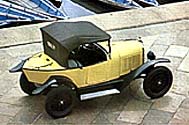
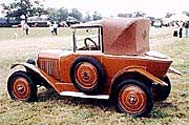
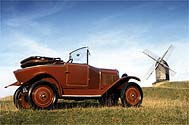
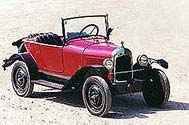
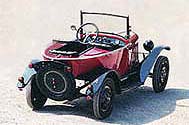
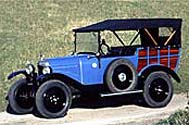 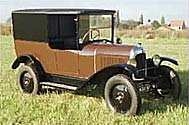
Return
to Part 1/.
(Written
in 2001)
Copyright © MMI, Bozi Mohacek. Reproduction only
by permission from the Author.
UK
Vintage Citroen Register
Go
to Recent SVVS Venues Page
|